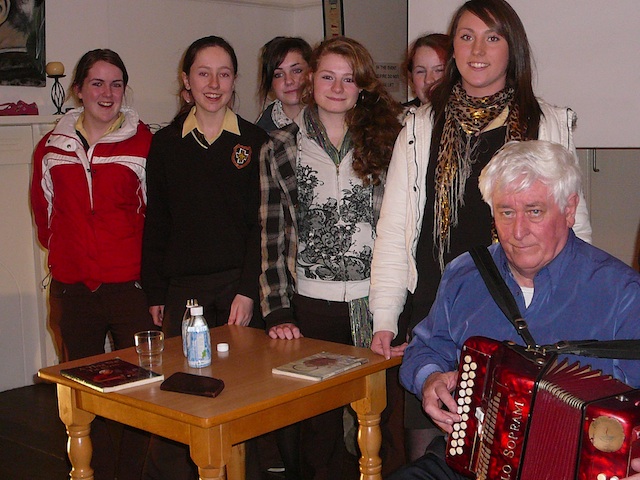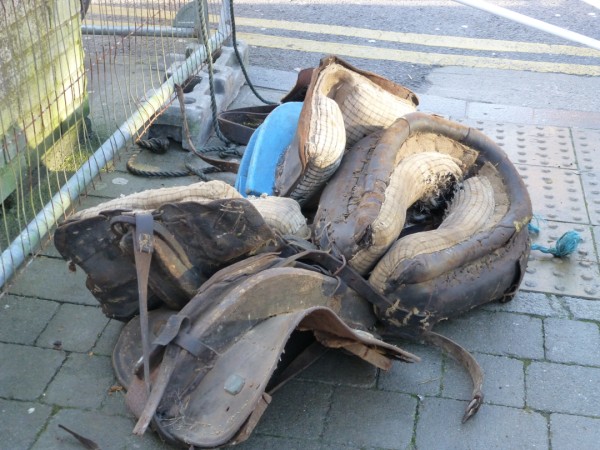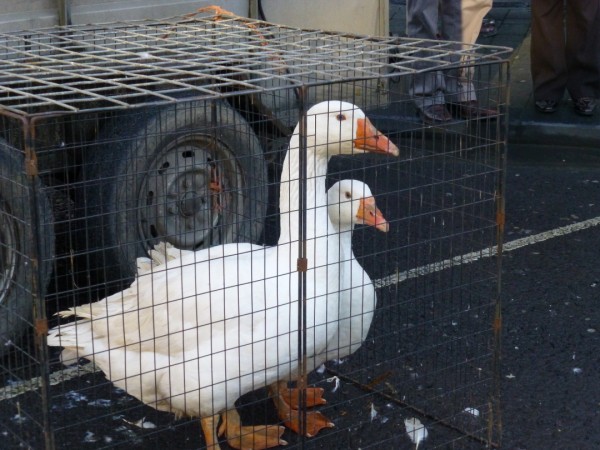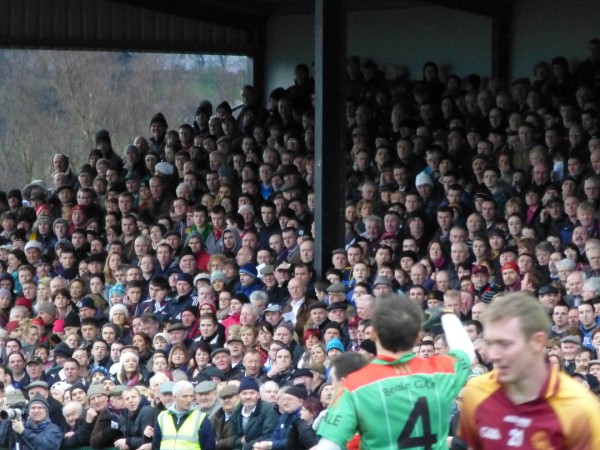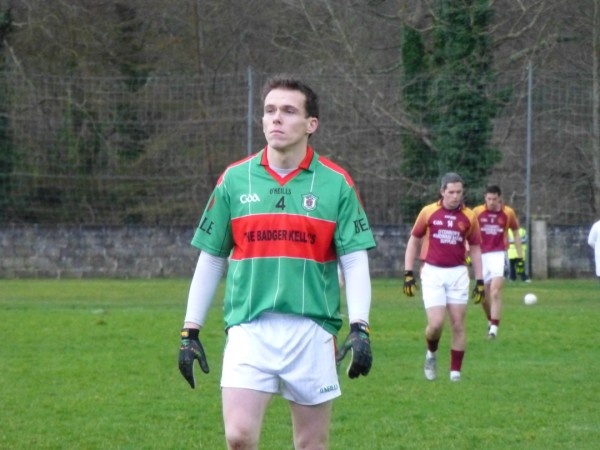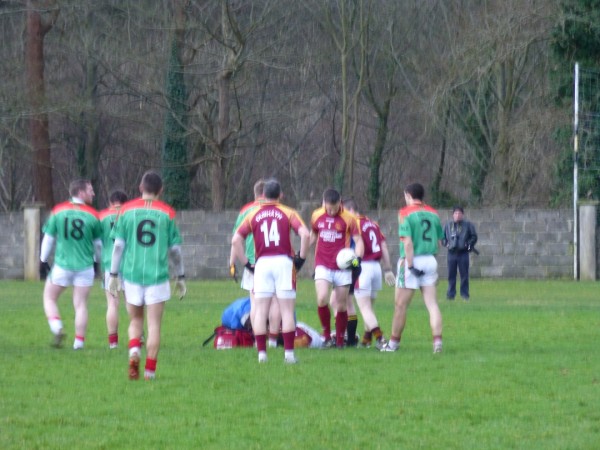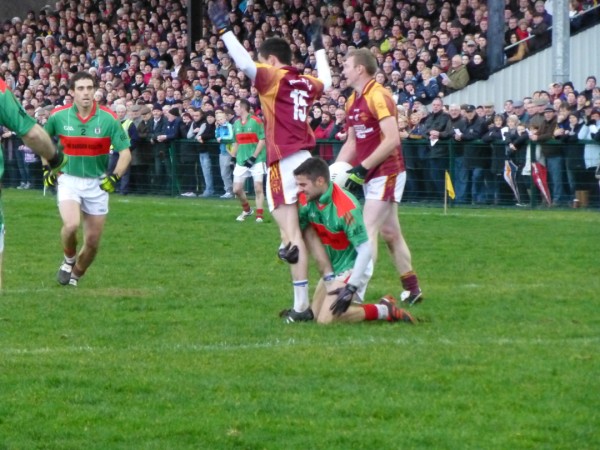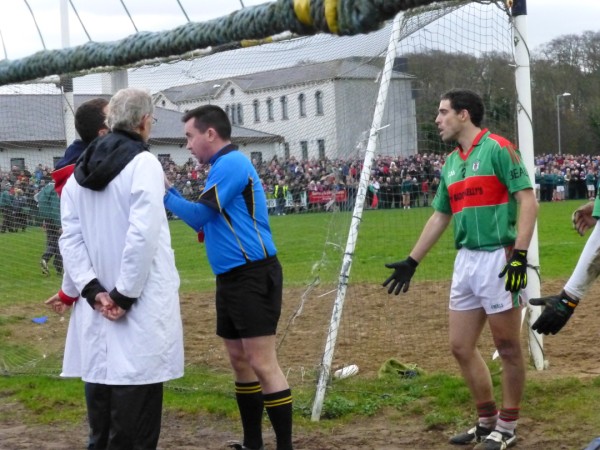
Corner of The Square with Feale sculpture
<<<<<<<<
Amy Sheehy’s artistic guide to The Garden of Europe
Next time you are in the Garden of Europe take a closer look at these guide signs.



The artwork is beautiful, well worth closer inspection.

Schiller with the last rose of summer 2023
<<<<<<<<
Visitors to The Workhouse

Barbara and Sue are from California and they came to Listowel on foot of the following story.
This is what I wrote in 2011;
It all started with a Google search in 2008
In a suburb of Sydney, Australia in 2008 a part-time teacher
named Julie Evans was researching her family tree. She knew that her great great grandmother, Bridget Ryan, had left Ireland in Famine times as part of the Earl Grey Scheme. Bridget was one of the “Famine Orphans” who were sent from the workhouse in Listowel to settle in the other side of the world.
The Earl Grey Scheme was devised by the British Government
to solve twin problems at opposite ends of The Empire. Workhouses in Ireland were massively overcrowded and struggling to cope with the numbers of starving people arriving daily. Meanwhile far away in Australia, colonists were decrying the lack of suitable (white) female
house servants.
Earl Grey decided to identify suitable girls in Irish
workhouses, to kit them out and send them to Australia. The Australian people were to foot the bill for the scheme. The definition of orphan was very loose. Some girls had one living parent and some even had two. Bridget Ryan, it would appear, fell into the second category.
Julie knew all of this when she Googled Listowel Co. Kerry,
Ireland and she found this website http://www.iol.ie/~coganj/ (link no longer works) maintained by Jim and Mary Cogan. She sent off an email and thus began an adventure whose latest twist was a TG4 project called Tar Abhaile (Come Home).
When I received Julie’s email in 2008, I knew little of the workhouse and nothing at all of The Earl Grey Scheme. A correspondence began and we emailed to and fro, filling in more and more of the story until 2011. North Kerry Reaching Out was set up and I began this blog. One of the aims of NKRO was to help the diaspora with research into their family trees. Julie was one of this diaspora whose story we took on board.
We soon discovered that Bridget Ryan was no ordinary orphan and her story began to take on many aspects of a soap opera. There was crime and punishment, poverty and wealth but with a little smattering of social grace and ladylike accomplishments.
Through this blog I made contact with an avid historian and
genealogist, Kay Caball. Kay grew up in Listowel . She is writing a history of all the Famine Orphans who left from Kerry workhouses. She and Julie formed a partnership to advance research into Bridget’s background.
Fast forward to 2013 the year of The Gathering and RTE is commissioning some TV programmes about descendants of emigrants.
So, Julie Evans, her husband Glyn, her third cousin, Jeanette
Greenway from California and Jeanette’s daughter, Peta arrive in Ireland; Julie to participate in the making of the TV documentary and her cousins to learn more about their ancestor, Bridget Ryan.
Over two days last week we filmed hours of footage which
will be distilled into 12 minutes of a Tar Abhaile programme to be aired on TG4 in September or October. Don’t worry, I’ll keep you posted.
I can’t spoil the programme by telling you the story but I
can tease you by telling you that it is an interesting tale with a few elements to illustrate the adage that truth is often stranger then fiction.
As they say in the worst journals, “Watch this space”.

Julie and her husband, Glyn in Listowel for the making of the documentary.
Long story short…Bridget Ryan’s father was a bigamist, her mother’s family were respectable and used influence to get her on the Earl Grey scheme. She arrived in Australia in 1850, married and had a big family whose descendants are now scattered around the world.

That was 2011. Fast forward to 2023.
One of those descendants, Sue Greenway, on the left and her friend Barbara came to Listowel to see what they could of the places where Bridget left from and to get a sense of what life was like in the Ireland Bridget left behind.

We went to the hospital chapel, the last remaining bit of the workhouse. The ladies posed for me beside a giant sunflower, a symbol of the hopeful future that awaited Bridget and the other “orphan” girls in Australia.


In Teampall Bán the ladies were saddened to read the awful account of Famine Times in Listowel.

They sat beneath the tree of contemplation surrounded by the unmarked mass graves of so many who were left behind when Bridget set out for her new life.
Listowel Tidy Towns have done us all a great service in keeping this sacred place so beautifully. Everyone I visit it with is truly impressed.
If you want to know more about the orphan girls and the Earl Grey Scheme, Kay Caball’s book, The Kerry Girls, Emigration and the Earl Grey Scheme is a great read.
<<<<<<<<
Teampall Bán in the 1980s guide

<<<<<<<<
Gorey Ghouls
Wexford County Council decorated the town of Corey with some larger than life witches for Halloween 2023



Photos: Mick O’Callaghan
<<<<<<<<
A Fact
The word barmbrack comes from barm, the lees left behind from ale brewing. The dried fruit was soaked in this barm. Brack comes from the Irish breac, meaning speckled.
<<<<<<<<










